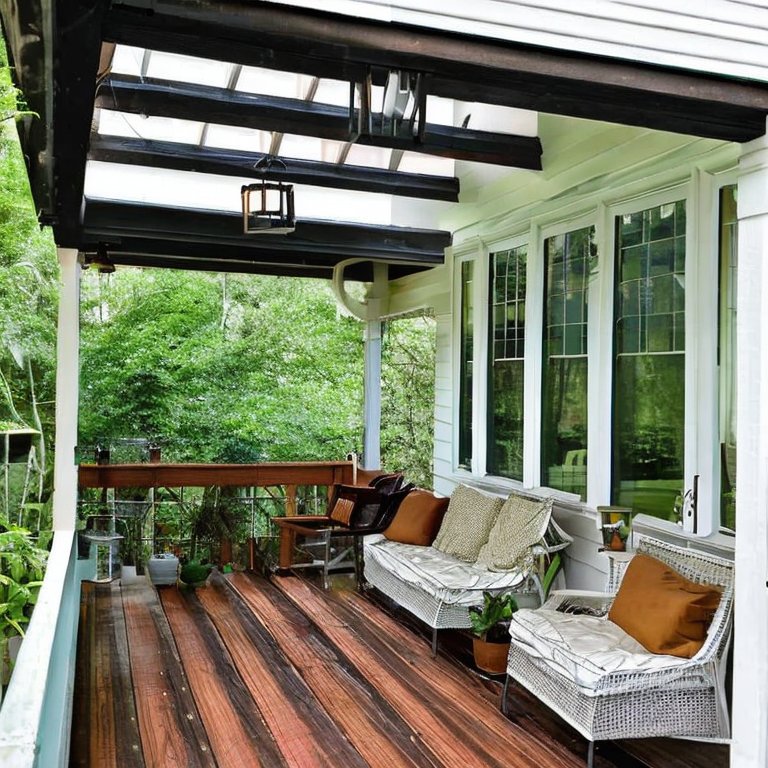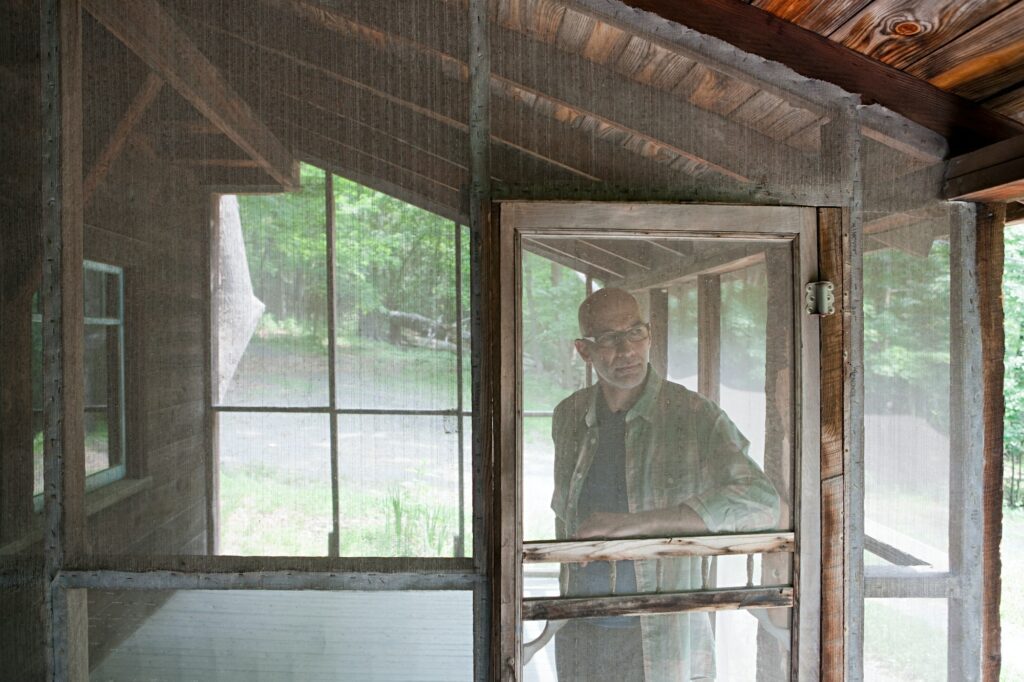Learn how to make your porch more sustainable by following our comprehensive guide as we look at the various ways to do so. Creating a sustainable porch not only enhances the beauty of your outdoor space but also contributes to a greener planet.
With a growing awareness of environmental issues, many homeowners are seeking ways to minimize their ecological footprint and make sustainable choices. In this comprehensive guide, we will analyze key factors that impact the sustainability of porches, explore different approaches, discuss tradeoffs, and shed light on the importance of considering the environmental impact of our decisions.
How to Make Your Porch More Sustainable
Contents
- 1 How to Make Your Porch More Sustainable
- 2 How Can I Reduce Water Consumption On My Porch?
- 3 What Are The Challenges In Maintaining A Green Roof On My Porch?
- 4 What Eco-Friendly Pest Control Options Are Available For Porch Areas?
- 5 FAQs About How to Make Your Porch More Sustainable
- 5.1 Q1. Are sustainable porch materials more expensive than traditional materials?
- 5.2 Q2. How can I maintain a sustainable porch during extreme weather conditions?
- 5.3 Q3. Can I make my existing porch more sustainable without a complete renovation?
- 5.4 Q4. How do I dispose of or recycle old porch materials responsibly?
- 6 Conclusion on How to Make Your Porch More Sustainable
Transform your porch into an eco-friendly oasis! Discover the secrets to making your porch more sustainable with our comprehensive guide. From choosing sustainable materials to energy-efficient lighting and water conservation strategies, unlock the key factors and tradeoffs involved in creating an environmentally conscious outdoor space. Let’s make sustainability a porch-perfect reality by checking these ideas below!
Sustainable Porch Materials
One of the first considerations when aiming for a sustainable porch is the choice of materials. Opting for environmentally friendly options can significantly reduce the carbon footprint of your project. Here are a few sustainable porch materials to consider:
a. Bamboo: Known for its rapid growth and renewability, bamboo is an excellent choice for porch flooring and decking. It is durable, aesthetically pleasing, and has a significantly lower environmental impact compared to traditional wood.
b. Recycled Composite Materials: Using recycled composite materials, such as recycled plastic and wood fibers, can be a sustainable alternative to traditional lumber. These materials often require less maintenance and have a longer lifespan.
c. Reclaimed Wood: Repurposing reclaimed wood from old buildings or structures not only adds character to your porch but also reduces the demand for newly harvested timber.
Energy-Efficient Lighting
Efficient lighting is crucial for a sustainable porch. By utilizing energy-saving bulbs and fixtures, you can reduce electricity consumption and lower your carbon emissions. Consider using LED lights, which are long-lasting, energy-efficient, and provide a warm and inviting ambiance.
Water Conservation
Conserving water is an essential aspect of sustainability. Implementing water-saving measures on your porch can make a significant difference. Install a rainwater harvesting system to collect rainwater for irrigation purposes. Use drought-resistant plants in your porch landscaping to minimize water requirements.
Green Roof or Vertical Gardens
Integrating greenery into your porch design is a sustainable and visually appealing option. Green roofs or vertical gardens not only provide insulation and reduce heat island effect but also improve air quality and create habitats for birds and insects. They also contribute to urban biodiversity.
How Can I Reduce Water Consumption On My Porch?
Reducing water consumption on your porch is an important step towards creating a sustainable outdoor space. Here are some effective strategies to achieve water efficiency:
- Install a Drip Irrigation System: Replace traditional sprinklers with a drip irrigation system that delivers water directly to plant roots, minimizing wastage through evaporation or runoff.
- Choose Drought-Tolerant Plants: Opt for native or drought-tolerant plants that require less water to thrive. These plants have adapted to local conditions and can withstand dry spells without extensive irrigation.
- Mulch the Soil: Apply a layer of organic mulch around your plants to retain moisture, suppress weed growth, and reduce the need for frequent watering. Mulch acts as a barrier, preventing evaporation and promoting water conservation.
- Water Efficiently: Water your porch plants early in the morning or late in the evening when temperatures are cooler. This reduces water loss due to evaporation and allows plants to absorb moisture effectively.
- Harvest Rainwater: Set up a rainwater harvesting system to collect and store rainwater from your roof or gutters. Use this collected water to irrigate your porch plants, reducing reliance on municipal water sources.
- Utilize Smart Irrigation Controllers: Upgrade to smart irrigation controllers that adjust watering schedules based on weather conditions and soil moisture levels. These controllers optimize water usage and prevent overwatering.
- Group Plants Based on Water Needs: Arrange your porch plants based on their water requirements. Grouping plants with similar needs together allows for targeted watering, avoiding water waste on plants that don’t require as much moisture.
- Monitor and Adjust: Regularly inspect your plants for signs of overwatering or underwatering. Adjust your watering practices accordingly to ensure plants receive just the right amount of water they need to thrive.
- Use Water-Saving Techniques: Explore water-saving techniques such as xeriscaping, which involves designing your porch with low-water-use features, like rocks, gravel, and native plants, to minimize irrigation needs.
- Reuse Water: Repurpose greywater from activities like washing fruits and vegetables or collecting excess water from pet bowls. Use this water to hydrate your porch plants instead of letting it go down the drain.
By implementing these water conservation strategies, you can significantly reduce water consumption on your porch while maintaining a vibrant and sustainable outdoor space.
What Are The Challenges In Maintaining A Green Roof On My Porch?
Maintaining a green roof on your porch comes with unique challenges that require attention and care. Here are two paragraphs outlining some of the common challenges associated with maintaining a green roof:
- Proper Drainage and Waterproofing: One of the primary challenges in maintaining a green roof on your porch is ensuring effective drainage and waterproofing. Green roofs are designed to retain moisture, which can put additional stress on the underlying structure. It is crucial to have a well-designed and properly installed waterproofing system to prevent water infiltration and potential damage. Clogged drains or inadequate slope can lead to pooling water, which may cause structural issues and compromise the integrity of the roof. Regular inspections and maintenance of the drainage system are essential to prevent water accumulation and ensure the longevity of your green roof.
- Plant Selection and Maintenance: Selecting the right plants for your green roof is vital for its long-term success, but it can be challenging. Green roofs often face harsher growing conditions, including direct sunlight, exposure to wind, and limited soil depth. Choosing plants that are well-adapted to these conditions, such as drought-tolerant and shallow-rooted varieties, is crucial. Additionally, regular maintenance is necessary to ensure the health and vitality of the plants. This includes proper irrigation, fertilization, and monitoring for pests or diseases. Access to the roof for maintenance activities can also pose challenges, especially in multi-story buildings, requiring careful planning and implementation of maintenance protocols.
What Eco-Friendly Pest Control Options Are Available For Porch Areas?
When it comes to pest control on your porch, there are several eco-friendly options available that prioritize the health of both your outdoor space and the environment. Here are two paragraphs discussing some effective eco-friendly pest control options for porch areas:
- Natural Repellents and Deterrents: Many natural substances can repel pests without harming them or the environment. Essential oils like peppermint, citronella, and lavender are known for their insect-repellent properties. Simply dilute a few drops of these oils in water and spray the mixture around your porch to deter pests. Additionally, planting certain herbs and flowers like basil, marigold, and rosemary can act as natural deterrents due to their strong scents. These eco-friendly methods discourage pests while adding beauty and fragrance to your porch.
- Beneficial Insects and Animals: Embracing nature’s own pest control agents can help maintain a healthy balance in your porch area. Introduce beneficial insects like ladybugs, lacewings, or praying mantises, which naturally prey on garden pests. Creating habitats for birds, bats, and frogs near your porch can also attract these natural predators, providing effective pest control. For example, installing bird feeders, bat boxes, or a small water feature can encourage these helpful creatures to take up residence in your porch vicinity, keeping unwanted pests in check without the need for chemical interventions.
FAQs About How to Make Your Porch More Sustainable
Q1. Are sustainable porch materials more expensive than traditional materials?
A1. While some sustainable materials may have a higher upfront cost, they often offer long-term savings due to their durability and low maintenance requirements. Additionally, the environmental benefits outweigh the initial investment.
Q2. How can I maintain a sustainable porch during extreme weather conditions?
A2. Sustainability and resilience go hand in hand. Choose materials that can withstand the weather conditions in your area and require minimal repairs or replacements. Regular maintenance, such as sealing wood or cleaning composite materials, can help prolong their lifespan.
Q3. Can I make my existing porch more sustainable without a complete renovation?
A3. Absolutely! Simple changes like replacing traditional light bulbs with LED bulbs, incorporating potted plants, and using eco-friendly cleaning products can enhance the sustainability of your existing porch.
Q4. How do I dispose of or recycle old porch materials responsibly?
A4. When renovating or replacing porch materials, explore local recycling options for wood, plastic, and metal components. Contact recycling centers or consult with waste management professionals to ensure proper disposal and recycling practices.
Conclusion on How to Make Your Porch More Sustainable
We showed you how to make your porch more sustainable, now get busy. Creating a sustainable porch involves considering multiple factors, from choosing eco-friendly materials to incorporating energy-efficient lighting and implementing water conservation measures. While there may be tradeoffs and challenges associated with different approaches, the long-term benefits for the environment and your well-being are substantial.
By making conscious decisions and weighing the impact of our choices, we can create beautiful and sustainable porches that contribute to a greener future. Let’s embrace sustainable practices and turn our porches into a haven of environmental consciousness.






